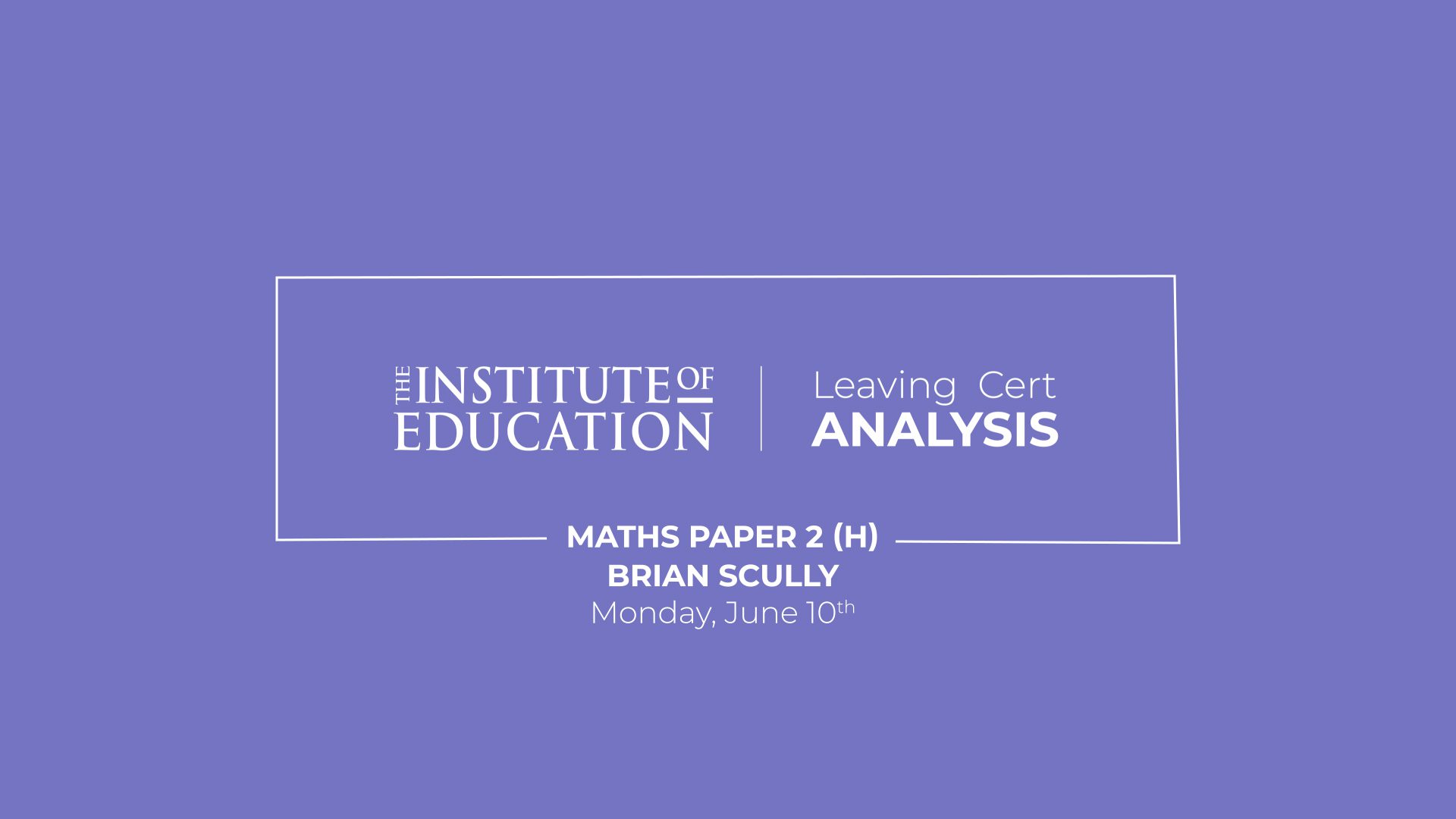Reaction to 2024 Leaving Certificate Mathematics Paper 2 (Higher Level) by Brian Scully, Mathematics teacher at The Institute of Education.
- This paper was a good mix of the causal language and novel questions that gradually increased the challenge of the paper.
- Students will be pleased to find that there were no gremlins that might unfairly trip them up.
Many students will have entered the exam anxious that Paper 2 would be a contrast to the reassuring and approachable Paper 1. Thankfully, this paper’s composition was mindful of the impact of question order and importance of clarity on those navigating the paper. The first question on stem leaf plots would have been familiar and recognizable as it drew from well- established material with the addition of unknown variables. The challenge was on the mechanical execution, not the comprehension. For example Question 4 was a pure examination of curricular material rather than a test of its application. Later questions migrated to distinctly Higher Level only concepts, but the progression was logical and offered the opportunity for those students striving for H2s and H1s to distinguish themselves.
A trend that carried over from Paper 1 was the mixing of topics. Many questions tested the mental agility of students as they bridged numerous aspects of the course: sometimes overtly, sometimes subtly. For example, Probability appeared in many questions, frequently alongside a different topic. Most of the challenges posed in these questions would be reflective of term time preparations. Areas consistently perceived as challenging by students, like the notation and language of Sets, were demanding in a manner that was familiar. As such, there were no additional gremlins thrown into this paper to upset the students or take this paper away from their expectations formed over years of study.
The more challenging elements appeared in the less familiar moments. The ambiguous appearance of the sine rule and a novel Question 9 might have worried some. The latter contained a unique diagram that required creative thinking and excellent understanding as it forced students to execute concepts in a context they will never have seen before. Yet, it was a trend that once students were brave enough to take that initial step into the question, their practice was rewarded by an emphasis on execution of concepts. Even the text heavy Question 10 was fair once you moved beyond the off-putting first impression.

